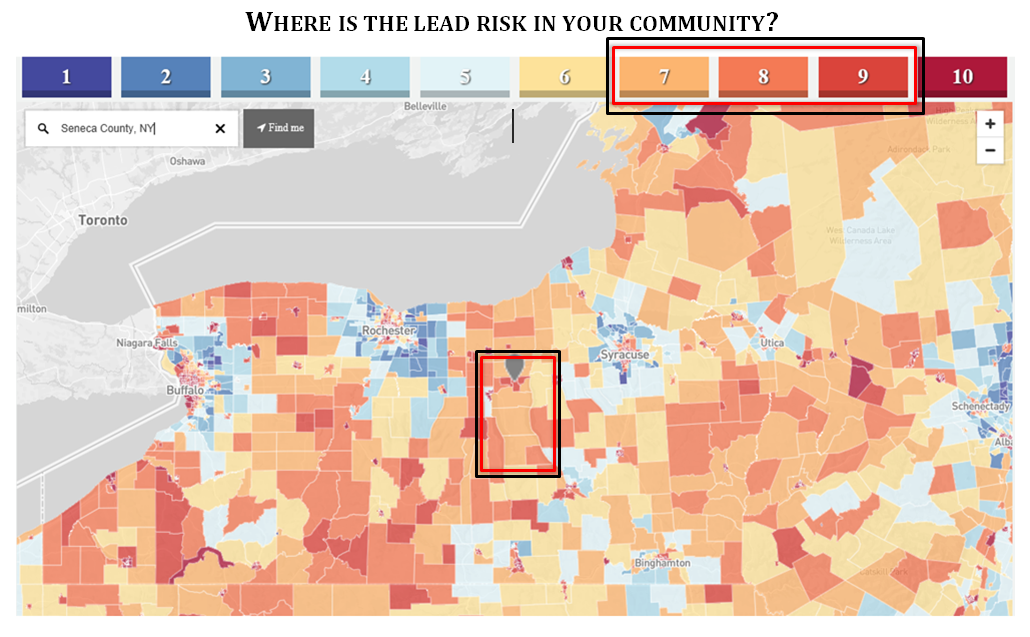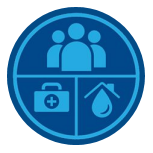
Lead Poisoning Prevention

Helpful Printables
What is Lead Poisoning?
Lead poisoning is a buildup of lead in your body over a period of months or years. Even small amounts of lead can cause serious health problems for children and adults alike. It can get into your bloodstream and once this occurs it will get stored in your tissues, organs, and bones. This leaves the person at significant risk for intellectual and health complications in life.

The Seneca County Lead Poisoning Prevention Program helps to protect children from lead poisoning by:
– Providing access to blood lead screening tests.
– Offering outreach and education to families for children who need testing.
– Collaborate with Primary Care Providers to get children tested/retested.
– Providing case management and extensive educational outreach for children with lead poisoning >5mcg/dL.
– Provides free lead poisoning education for the public through formal presentations to community businesses and groups, community outreach tables at community events & health fairs, and mailers.
– Conducts environmental testing and investigations of primary and secondary residences for children with levels >5mcg/dL.
– Maintains a database of the children in Seneca County who have been tested for elevated blood levels.
Our program is staffed with a full time nurse and sanitarian. We work in collaboration with all medical practices in and out of Seneca County to provide testing and screening for children. The goal of the Lead Poisoning Prevention Program is to decrease the incidence of Lead Poisoning in Seneca County through effective screening, testing, health education and outreach to those at risk.
How does this affect Seneca County?
Areas where kids face the highest risk of lead poisoning exist all across America- even here in Seneca County. As you will clearly see from the map above- Seneca County has a very high lead risk.
On a scale of 1 to 10- SENECA COUNTY SCORED LEAD RISK LEVELS OF 7, 8, AND 9.
We are at a higher risk for several reasons, some being that we have a high number of older homes in our county (43% built before 1950) and we have various industries in the area that have high lead risks associated with them.
Blood lead levels even as low as 5µg/dL are associated with loss of IQ, behavior and learning problems as well as a multitude of health issues.
HELPFUL LINKS:
How do people become lead poisoned?
The main exposure people have often happens within their own home. This often happens because of peeling lead-based paint; lead contaminated dust, old pipes, and contaminated soil surrounding their home. Sometimes family members even unknowingly bring home lead contaminated clothes and footwear from jobs. Lead breaks down into fine, powdery dust that is all but invisible. It can be ingested (swallowed) or inhaled.
Unfortunately, most children show no outward symptoms of the poisoning until the damage done is irreversible. This is why prevention and testing is key! The earlier it is caught the better chance the child has of recovery. Lead poisoning is diagnosed via a simple blood test at ages one and two years of age. The blood test is mandated by NYS Public Health Law.
Seneca County Health Department
2465 Bonadent Drive – Suite 3 • Waterloo, NY 13165
Public Health: (315) 539-1920
Environmental Health: (315) 539-1945


